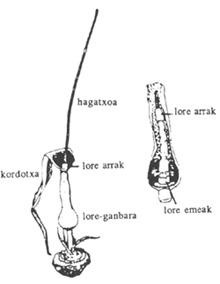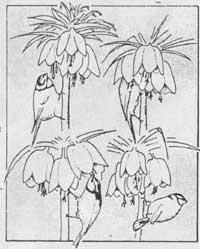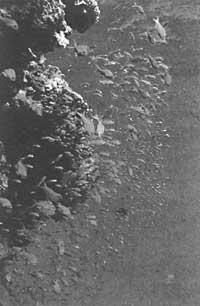Hot sex of Budu zitori
1989/07/01 Elhuyar Zientzia Iturria: Elhuyar aldizkaria
The ability to maintain body temperature well above the ambient temperature (metabolic heat) is considered characteristic of superior animals (birds and mammals). However, the generation of metabolic heat in the flowers of six plant families is known. High temperatures are used to aromatize volatile substances that will attract pollinating insects.
The flowers of the budu citoria, for example, can sometimes exceed the ambient temperature at 22ºC. In addition, it sprouts from rotten meat, urine, excrement and sulfur gases.

The inflorescence of the budu citoria consists of a camera of flowers in the form of a trap, with male and female flowers. Male flowers are found inside a stick. Above the flower chamber is a rod shaped as a radio antenna of the cars (see figure). Until the day of flowering (day D) the rod is inside a pod called cordotx.
The source of heat is salicylic acid. The afternoon before day D begins to increase the concentration of salicylic acid in the rod and it is achieved that it is 100 times more concentrated than the basic level. In the morning of day D opens the cord and the rod is in the air. The maximum heat production and simultaneous odour production occurs between 3 and 5 hours after the dawn of day D. In mid-afternoon it decreases the heat and concentration of salicylic acid.
The mango carries numerous pollinating insects to the floral attic. The night of day D is another warming. Heating occurs in the flower chamber, between male and female flowers. The temperature rises less, only 10ºC, but stays longer, from 7 to 14 hours.
The second causes the work of insects attracted by the first warming and trapped in the attic. Male flowers release pollen and insects take it by carrying female flowers. In the end, the flower chamber opens and insects can escape.

Gai honi buruzko eduki gehiago
Elhuyarrek garatutako teknologia





